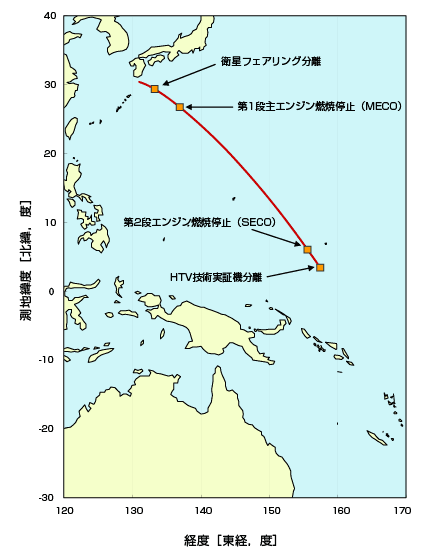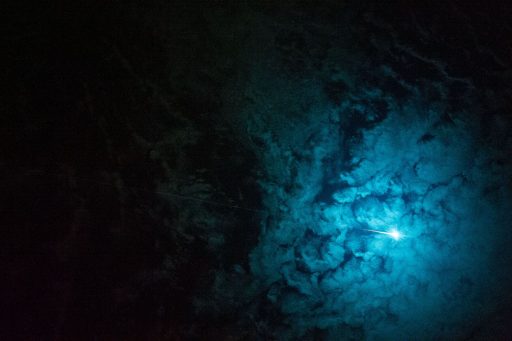Note: Original thread title was (SUCCESSFULLY INSTALLED!) JAXA "KOUNOTORI6" (HTV6) aboard H-IIB on Dec.9, 10:26 (JST) The thread title was changed to reflect the latest news.
UPDATES: Installation confirmed!
http://spaceflightnow.com/2016/12/1...tery-delivery-to-international-space-station/
3. The HTV-6 Mission:
Developed and built in Japan, the H-II Transfer Vehicle (HTV) known as "KOUNOTORI (white stork)" is an unmanned cargo transfer spacecraft that delivers supplies to the International Space Station (ISS).
With the world’s largest loading capacity of approximately six tons and such unique functions as the International Standard Racks, “KOUNOTORI” plays a key role in ISS operations.
4. Latest News:http://iss.jaxa.jp/en/htv/news/batteries_loaded.html


5. Flight Schedule:
HTV6 Mission Schedule (as of October 7, 2016)
All times are Japan Standard Time (UTC + 9 hours)
Item|Description
HTV Flight Name|HTV6 (KOUNOTORI6)
Launch date and time|10:26 p.m.*1, December 9 (Friday), 2016
Launch window|December 10 - 31, 2016, 2016*2
Launch site|Yoshinobu Launch Complex, Tanegashima Space Center (TNSC)
*1: Time will be determined by the updated orbit of the International Space Station (ISS).
*2: The launch day and time during the launch window shall be decided by the international coordination for ISS operations.
6. Flight Profile:

7. Mission Timeline:




8. The rocket:
Pamphlet:http://global.jaxa.jp/activity/pr/brochure/files/rocket05.pdf
The design:

Characteristics:

*1-In vacuum. Solid rocket booster's thrust is set to the maximum value.
Capabilities:
Orbit|Altitude|Payloads
Orbit for HTV (Inclination:51.6 degrees)|350km-460km|16.5t
Launch Records:

9. The payload:
The HTV6 delivers a total of 5.9 metric tons of cargo to the ISS, including 3.9 metric tons in the Pressurized Logistics Carrier (PLC) and 1.9 metric tons in the Unpressurized Logistics Carrier (ULC).
Cargo in the Pressurized Logistics Carrier (PLC)
-Utilization/experiment-related items
-System supplies
-Cargo for the onboard crew
Cargo in the Unpressurized Logistics Carrier (ULC)
-ISS battery Orbital Replacement Units (ORUs)
Orbital experiment hardware
-Kounotori Integrated Tether Experiment (KITE)
-Solar Cell Film Array Sheet for Next Generation on Kounotori Six (SFINKS)
Waste disposal
-6 metric tons of waste and expired experiment devices that are no longer necessary.
-Old nickel-hydrogen batteries onboard that were removed from the ISS.
10. Gallery:
http://jda.jaxa.jp/category_p.php?lang=e&page=&category1=1&category2=23&category3=604&page_pics=100
For more information about Kounotori, see:http://global.jaxa.jp/projects/rockets/htv/index.html
UPDATES: Installation confirmed!
http://spaceflightnow.com/2016/12/1...tery-delivery-to-international-space-station/
Mission control completed installation of the HTV on the space station at 1357 GMT (8:57 a.m. EST), when 16 bolts drove into place to create a firm connection between the supply ship and the Harmony module. Astronauts planned to open hatches leading into the HTV on Wednesday, but that could be moved up to Tuesday evening if the crew has time.
3. The HTV-6 Mission:
Developed and built in Japan, the H-II Transfer Vehicle (HTV) known as "KOUNOTORI (white stork)" is an unmanned cargo transfer spacecraft that delivers supplies to the International Space Station (ISS).
With the world’s largest loading capacity of approximately six tons and such unique functions as the International Standard Racks, “KOUNOTORI” plays a key role in ISS operations.
4. Latest News:http://iss.jaxa.jp/en/htv/news/batteries_loaded.html
ISS batteries loaded into KOUNOTORI6
Last Updated: July 26, 2016
From June 1-2, the operations for loading the ISS battery Orbital Replacement Units (ORUs) into the H-II Transfer Vehicle KOUNOTORI6 and filling the water bags were unveiled to the press at the Tanegashima Space Center (TNSC)

A Japanese-made, new lithium-ion battery cell for the ISS

HTV Exposed Pallet (EP) loaded with six ISS battery ORUs
5. Flight Schedule:
HTV6 Mission Schedule (as of October 7, 2016)
All times are Japan Standard Time (UTC + 9 hours)
HTV Flight Name|HTV6 (KOUNOTORI6)
Launch date and time|10:26 p.m.*1, December 9 (Friday), 2016
Launch window|December 10 - 31, 2016, 2016*2
Launch site|Yoshinobu Launch Complex, Tanegashima Space Center (TNSC)
*1: Time will be determined by the updated orbit of the International Space Station (ISS).
*2: The launch day and time during the launch window shall be decided by the international coordination for ISS operations.
6. Flight Profile:

7. Mission Timeline:
8. The rocket:
Pamphlet:http://global.jaxa.jp/activity/pr/brochure/files/rocket05.pdf
The design:

Characteristics:
*1-In vacuum. Solid rocket booster's thrust is set to the maximum value.
Capabilities:
Orbit for HTV (Inclination:51.6 degrees)|350km-460km|16.5t
Launch Records:
9. The payload:
The HTV6 delivers a total of 5.9 metric tons of cargo to the ISS, including 3.9 metric tons in the Pressurized Logistics Carrier (PLC) and 1.9 metric tons in the Unpressurized Logistics Carrier (ULC).
Cargo in the Pressurized Logistics Carrier (PLC)
-Utilization/experiment-related items
- JEM Small Satellite Orbital Deployer(J-SSOD)
- 7 Microsatellites (CubeSats)
- Payload for the Two Phase Flow experiment
- Position Sensitive Tissue Equivalent Proportional Chamber (PS-TEPC)
- High Definition TV Camera - Exposed Facility 2 (HDTV-EF2)
-System supplies
- Carbon Dioxide Removal Assembly (CDRA) Orbital Replacement Unit (ORU)
-Cargo for the onboard crew
- Potable water
- Fresh food
Cargo in the Unpressurized Logistics Carrier (ULC)
-ISS battery Orbital Replacement Units (ORUs)
Orbital experiment hardware
-Kounotori Integrated Tether Experiment (KITE)
-Solar Cell Film Array Sheet for Next Generation on Kounotori Six (SFINKS)
Waste disposal
-6 metric tons of waste and expired experiment devices that are no longer necessary.
-Old nickel-hydrogen batteries onboard that were removed from the ISS.
10. Gallery:
http://jda.jaxa.jp/category_p.php?lang=e&page=&category1=1&category2=23&category3=604&page_pics=100
For more information about Kounotori, see:http://global.jaxa.jp/projects/rockets/htv/index.html
Last edited:


